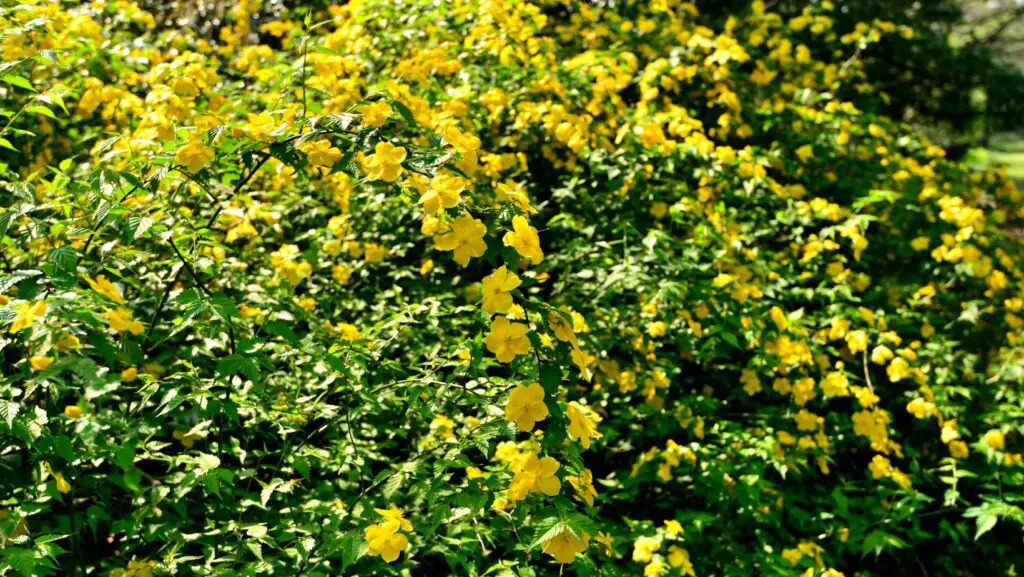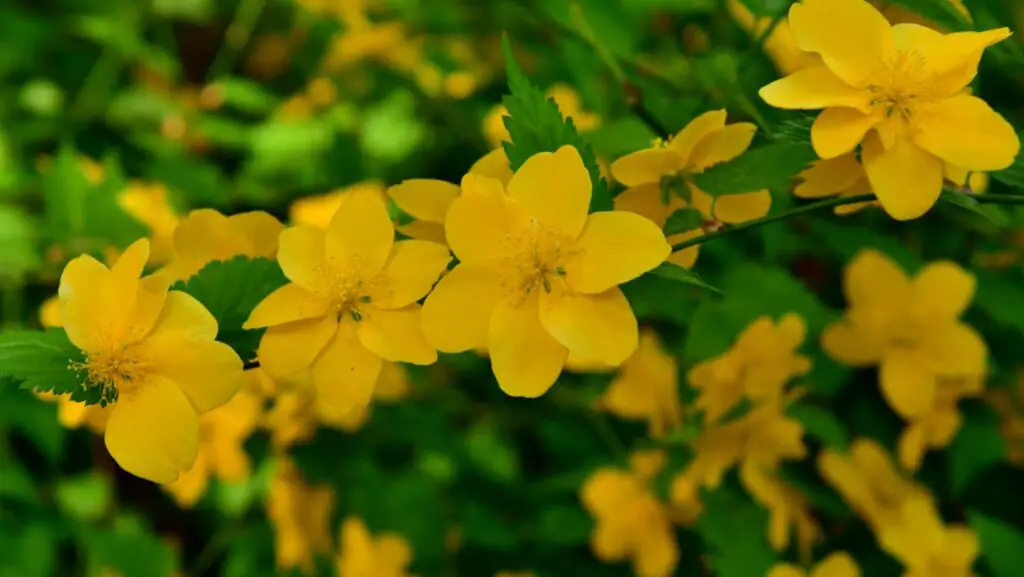
The japanese kerria can keep relatively modest dimensions thanks to an annual pruning; moreover, even in half-shade, its blooming is brilliant: two qualities to be used in the small city gardens.
In this article, I have gathered for you all the information about the kerria japonica, its main characteristics, and what you need to know to plant and grow it.
Characteristics of the Japanese kerria
| Scientific name | Kerria japonica |
| Family | Rosaceae |
| Origin | China, Japan |
| Foliage | Deciduous |
| Flowering | April-May |
| Rusticity | -15°C (-59°F) |
| Exposure | Light shade |
| Soil | Cool and well-drained |
The japanese kerria grows free form and reaches 2.50 to 3 m in height and 1.50 m in width, with a medium speed of growth. The branches are flexible to slightly drooping. The leaves are toothed and clearly veined.
The blooming is characterized by the birth of numerous small axillary flowers, in the shape of small luminous yellow pompon.
How to grow a Japanese kerria
A good garden soil is sufficient for the needs of this shrub. It has a tendency to sucker and colonize space, which can be an advantage depending on the intended use.
At planting, between November and March, cut off weak branches and dead wood and keep the strongest branches.
After the first year’s flowering, and every year thereafter, remove the branches that have flowered 20 cm above the ground. Also remove the weakest branches. With this thinning out, you will perpetuate the flexible habit of the shrub.
How to grow a Japanese kerria in a pot
It is not recommended because the powerful suckering root system of the Japanese kerria quickly becomes cramped.
Where to plant a kerria japonica
Japanese kerria is a beautiful flowering shrub that can be planted alone or in a small grove. When planted alone, it can be used as a specimen plant in the landscape, providing a bright splash of color. When planted in a small grove, it can create a pleasing composition of texture, color, and form. When planted in a group, they can be used to create a hedge or border (in flowering hedges in association with lilacs, seringats, and spireas).
When planting a small grove, it is important to space the trees evenly and allow enough room for them to reach their full height and spread. Additionally, you may want to consider planting different varieties of Japanese kerria to create a more diverse composition.
Our selection

The choice is not very important. Feel free to choose any variety.
- The botanical type is still frequently offered, but prefer the double-flowered variety ‘Pleniflora‘, introduced about 50 years before it!
- ‘Golden Guinea‘ has larger, but single flowers.
- For those who like variegated foliage, ‘Picta‘ has white speckled leaves. Its flowers are lemon yellow.
In a nutshell
The Kerria Japonica, or Japanese Kerria, is an easy-to-care-for flowering shrub that can thrive in most areas with adequate sunlight and soil moisture. It is a beautiful addition to flower beds and rock gardens for its unique yellow flowers, which can also be used as cut flowers in floral arrangements. With proper care and maintenance, the Japanese Kerria can bring years of enjoyment and beauty to any garden.

Hi!
I am the guy behind Theyardable.com. I grew up on a homestead and I am here to share the knowledge I have and things I learn while living in the countryside.
